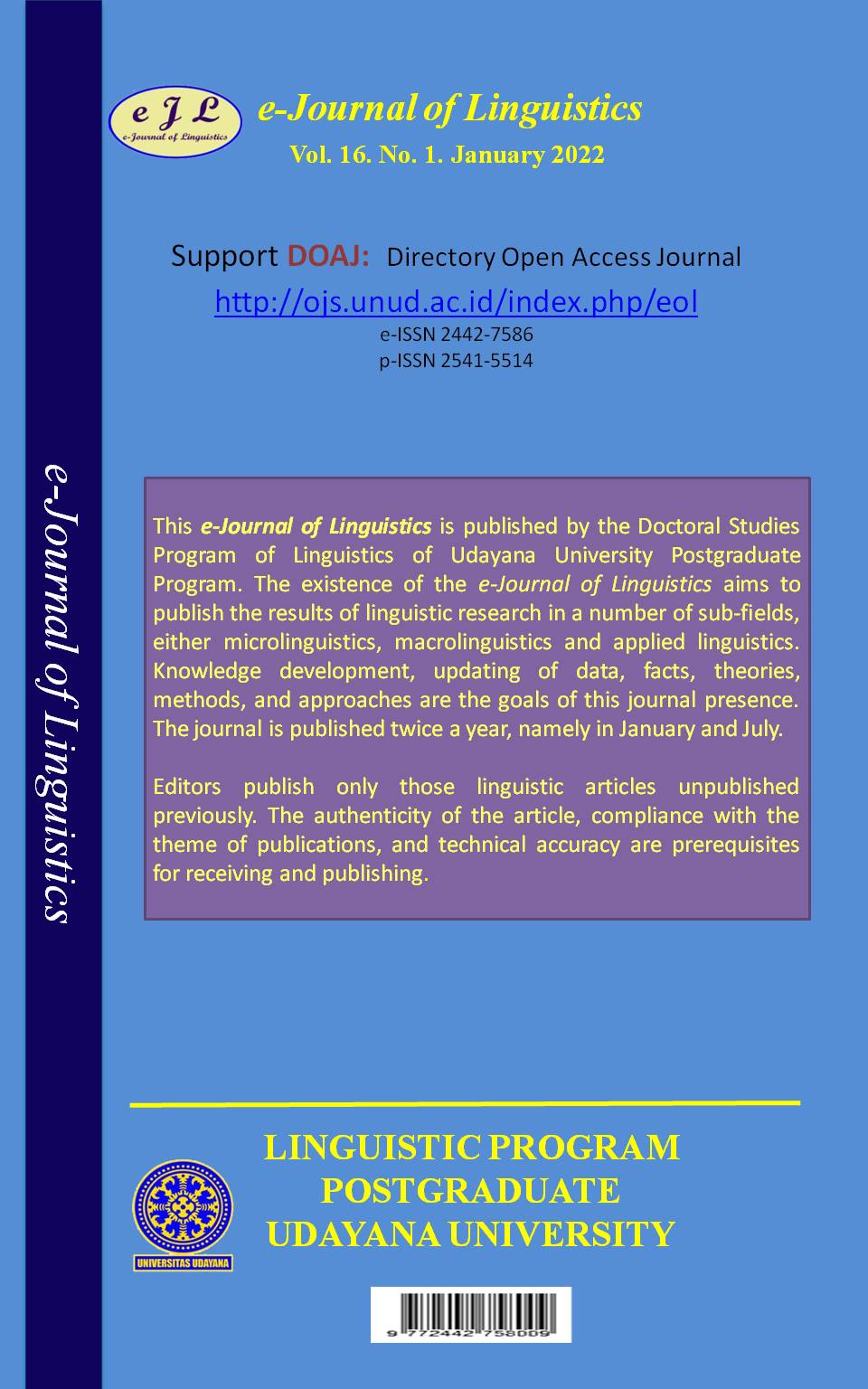The Non-verbal Resources of Linguistic Landscape in Dali Ancient City Tourist Attraction, China
Abstract
The aim of this study is to call for more attention to the non-verbal resources of linguistic landscape research and also provide a certain reference for implement of various countries in the other scenic area of the world. The data collection technique is the comprehensive photographing of signs in various shops, hotels, restaurants at the streets of survey areas. The equipment used is a digital camera. The sampling technique is carried out by random sampling. In order to get the diversity, a wide range of signs is selected. Through analyze, the non-verbal resources of the linguistic landscape of Dali ancient city tourist attraction is that official signs appropriately use the non-text marks to better promote local culture. The use of colors highlights text messages and makes people visually comfortable, in line with Chinese aesthetic habits. Most of the signs have radically abandoned traditional shapes and used non-traditional shapes that are more distinctive and can convey cultural information, which are worthy of promotion. Since the combined sign is formulated in accordance with the official sign standard, the shape and color are more in line with the official standard. The non-text marks on the signs are customized privately, which is more diverse than the unified official watch signs. The non-verbal resources of private signs pay more attention to the transmission of information, and more use of phone numbers combined with brand logos makes the linguistic landscape an advertising effect and maximizes the mass communication of private brands. In addition, in order to comply with the official requirements, the color and shape of the signage do not differ much from store to store. It is worth mentioning that the official signage has a more long-term development perspective, by using the QR code which is very popular nowadays, but the scope of the implement is limited.
Downloads
References
Zhao Meng. (2014) The Use and Matching of Colors in Advertising Design, Intelligence, 249-250.
Husband, Charles & Verity Saifullah Kahn. (1982) The viability of ethnolinguistic vitality: Some creative doubts. Journal of Multilingual and Multicultural Development 3(3). 193-205.
Antonio Bruyel-Olmedo, Maria Juan-Garau. (2015) Minority languages in the linguistic landscape of tourism: the case of Catalan in Mallorca. Journal of Multilingual and Multicultural Development, 598-619.
Backhaus, Peter. (2009) Rules and regulations in linguistic landscaping: A comparative perspective. In Elana Shohamy & Durk Gorter (eds.), Linguistic landscape: Expanding the scenery, 157-172. New York, NY & London: Routledge.
Collins, J. & S. Slembrouck (2007). ‘Reading Shop Windows in Globalized Neighborhoods: Multilingual Literacy Practices and Indexicality’ Journal of Literacy Research, 39:3, 335-356.
Shan Zhiqiang. (2017) Language Code in Geographical Investigation, Language Strategy Research, (2) 22-25.
Feng Xiaohui. (2014) The translation and translation of Shijiazhuang language, language and landscape guided by the promotion of city image, Science and Technology Vision, (18)28-31.
Fang Jia. (2015) Investigation and Research on the English Translation of Public Signs of Road Names from the Perspective of Language Landscape: Taking Urban Roads in Changzhou as an Example, Journal of Jiangsu University of Technology, (1) 55-59.

This work is licensed under a Creative Commons Attribution 4.0 International License











